Everything You Need to Know About Booklet Binding

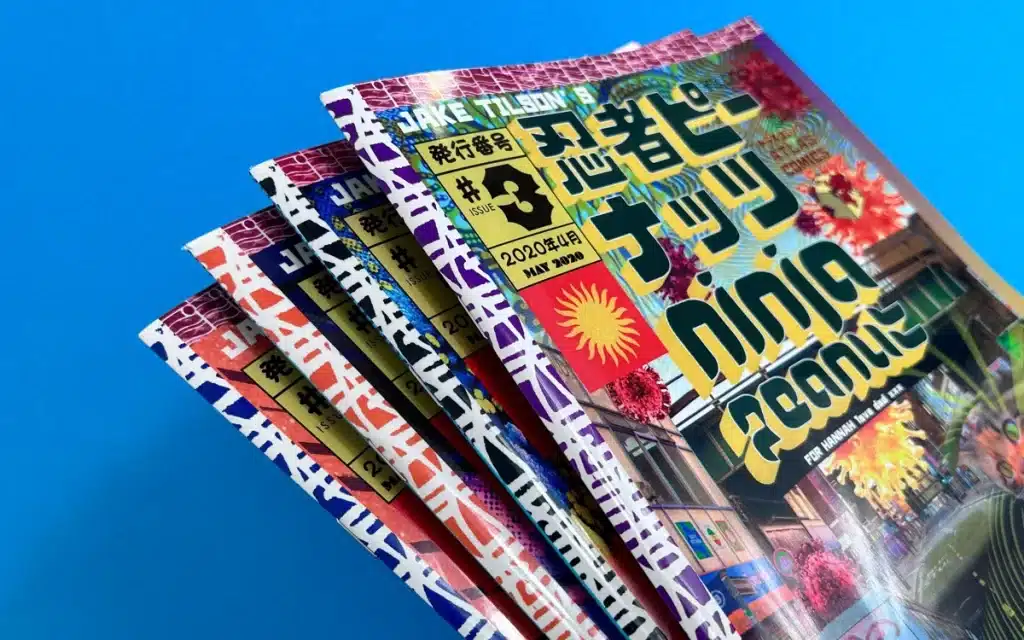
Booklet binding is an intricate process that breathes life into printed materials. Simply put, binding is the act of attaching multiple sheets of paper together using different techniques, primarily based on the size and purpose of the printed work. Various binding methods can create different impressions on the reader, showcasing the meticulous craftsmanship of the printed piece.
From sewn stitches to adhesives, every binding method serves a unique purpose, accentuating the visual allure of the printed material while ensuring effortless readability. Whether elegantly stitched magazines or handy loop-bound notebooks, understanding the nuances of booklet binding reveals an elaborate affair between art, technology, and comprehensive utility.
This blog post will explore the different types of booklet binding and guide you in choosing the most appropriate method for your specific needs.
What are the Different Types of Booklet Binding?
Booklet binding comes in many variations, each offering distinct advantages for different types of printed material. Six primary types stand out, each with unique qualities and applications: Saddle Stitch Binding, Perfect Bound Binding, Spiral Binding, Wire-O Binding, Hardcover Binding, and Loop-Stitched Binding. Knowing the nuances, utility, and benefits of these different types of binding is crucial when producing a booklet that matches its intended purpose and audience. Stay tuned as we discuss each type of binding in detail.
1. Saddle Stitch Binding
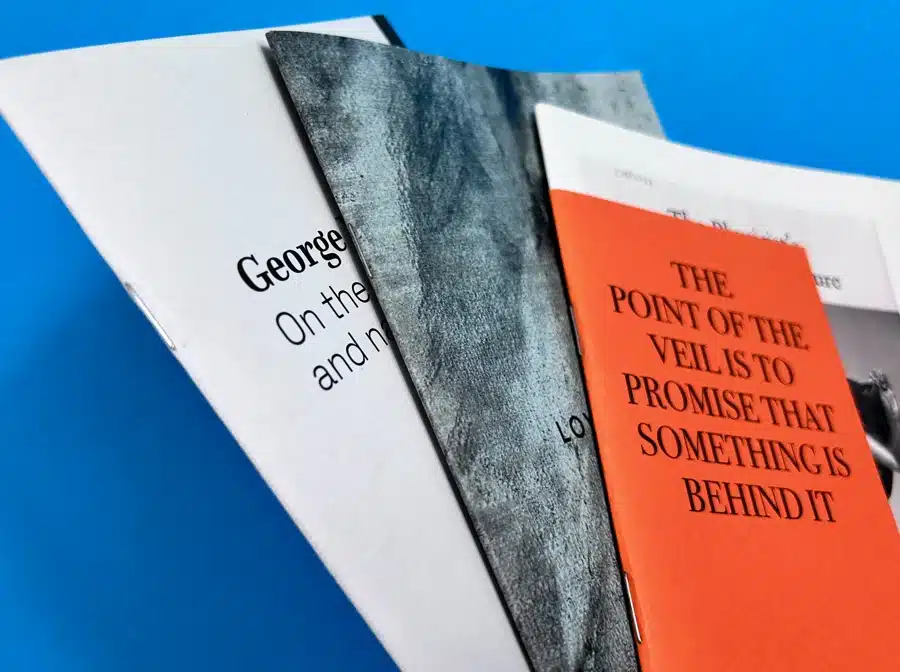
With saddle stitch binding, sheets of paper are draped over a saddle-like piece of machinery. Despite the stitching implied by its name, this method actually utilises wire staples to create a secure yet economical bind. To ensure the integrity of saddle-stitch binding, the process needs to be done in multiples of four – your booklet ideally should have a minimum of 8 pages. Saddle-stitched booklets can accommodate a maximum of 64 pages. Any more than that, and the binding doesn't typically perform at its best.
This versatile method of bookbinding is a prevalent choice due to its cost-effectiveness and fast turnaround time. It's ideal for projects like brochures, newsletters, and magazines. The best thing about saddle stitching is its simplicity. With a lightweight design, saddle stitched booklets lie flat when opened, offering outstanding durability and readability.
Remember to keep the necessary text or graphics away from the fold line to avoid accidental creasing or cutting during the binding process.
When to Use Saddle Stitch Binding?
Saddle Stitch Binding is ideal for documents that require a professional yet simple binding solution. It's perfect for:
- Brochures: Especially those with a lower page count (typically 8 to 48 pages).
- Catalogues: For shorter catalogues or product brochures.
- Magazines: For smaller, lightweight magazines.
- Reports: For shorter reports or presentations.
- Program booklets: For events and conferences.
2. Loop-Stitched Binding
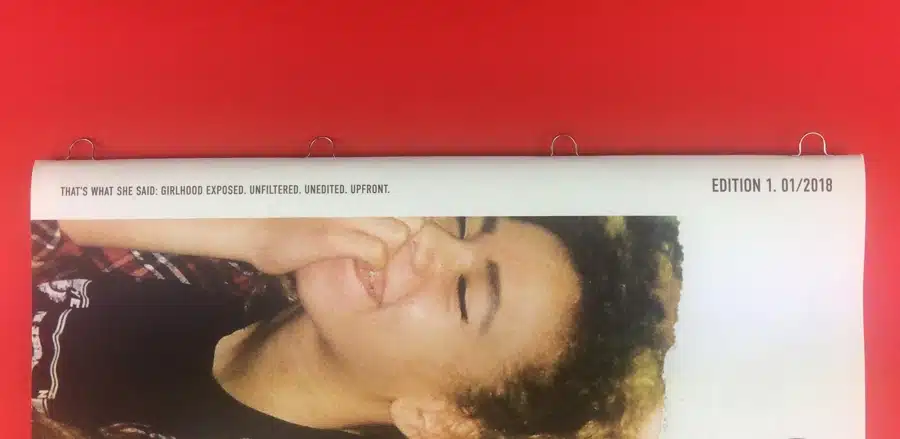
A somewhat rare variant of saddle stitching, Loop-Stitched Binding, can be identified by the loops of wire strategically placed along the spine of the booklet. These sturdy wire loops provide an added advantage: they help secure the booklet to a binder ring without the need for a hole punch. This additional feature creates an opportunity to neatly store the booklet in a binder, making it convenient not just for information accessibility but also for the preservation of content.
In 18 years, this is a process we have used once at Ex Why Zed!
Loop-stitched binding thus becomes an attractive option for materials that require regular reference and update. Because these loops replace the normal staples of a saddle stitch booklet, this style of binding offers the same versatility, cost-effectiveness, and lightweight portability with the added convenience of binder compatibility.
When to Use Loop-Stitched Binding?
Loop-stitched binding is particularly useful for:
- Notebooks: Offers a durable and flexible binding for frequent use.
- Calendars: Provides a sturdy and professional finish.
- Workbooks: Ideal for books that need to lay flat.
- Cookbooks: Allows for easy flipping through pages.
- Custom Journals: Offers a personalised and stylish binding option.
3. Spiral Binding
Spiral Binding, also known as spiral coil binding, involves a durable PVC plastic coil threading through evenly spaced holes punched on the spinal edge of the booklet's cover and inner pages. Apart from its strength and durability, what makes spiral binding unique is the array of available colours. You're not relegated to a plain white or black option; coils can be custom-ordered to match your booklet's aesthetic imprint.
The maximum spine size for a spiral-bound booklet can be 2". The versatility in sizes allows the creation of bespoke spiral-bound booklets suited for a wide array of projects. An exciting feature of the spiral binding method is that it allows the booklet to open a complete 360° - a handy feature while taking down notes or referencing. It makes handling the booklet easy, offering high readability and adaptability to different needs.
When to Use Spiral Binding?
Spiral binding is recommended when you need the booklet to lay flat or rotate pages completely without causing damage to the spine. It's the best option for:
- Reference Materials: Offers easy access to specific pages.
- Notebooks and Journals: Provides a durable and flexible binding.
- Workbooks and Exercise Books: Allows for easy writing and drawing.
- Cookbooks and Recipe Books: Enables quick and easy reference.
- Presentation Materials: Keeps pages secure and allows for easy flipping.
4. Perfect Bound Binding
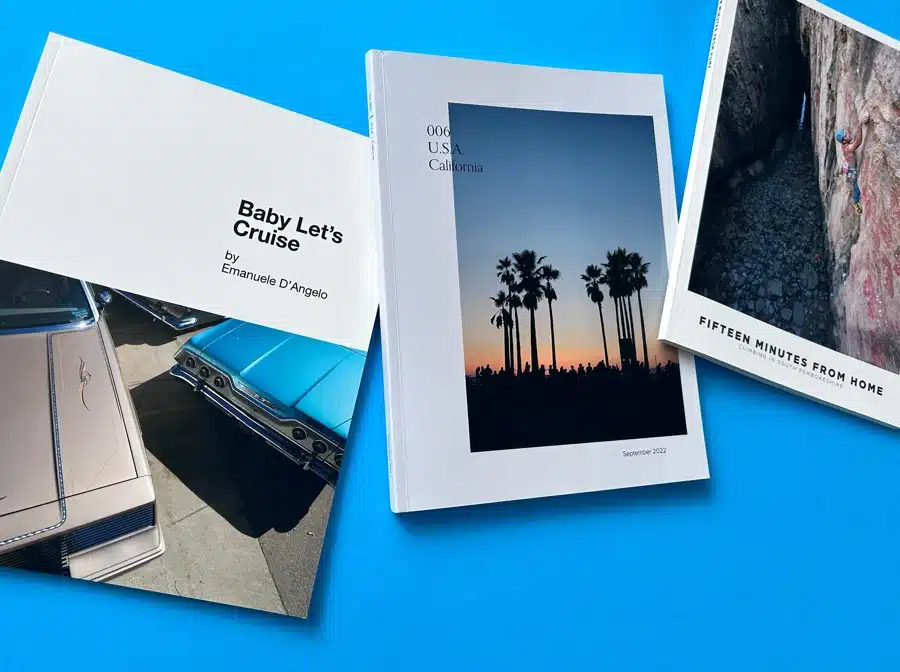
In Perfect Bound Binding, multiple sheets of paper are attached using a strong yet flexible adhesive mechanism. Securing these pages with adhesives such as the traditional EVA glue gives them a robust base encapsulated by a wraparound cover, bringing forth clean and crisp edges. This method is akin to most paperback books encountered, featuring a neat appearance that hints at sophistication and quality.
Perfect bound binding is ideal for booklets larger than 64 pages in size. The outcome resembles a soft-covered book, presenting an aura of refinement and class, but notably less durable than hardcover books.
The Perfect bound binding process involves first arranging the pages in precise order, grinding the edges down to a rough texture that holds the adhesive better before being glued together. Now dried, the area is neatly trimmed, delivering you a perfect-bound booklet that not only looks impressive but ensures an efficient reading experience.
With a large enough spine, generally over 5 millimetres, there is enough depth to add a title.
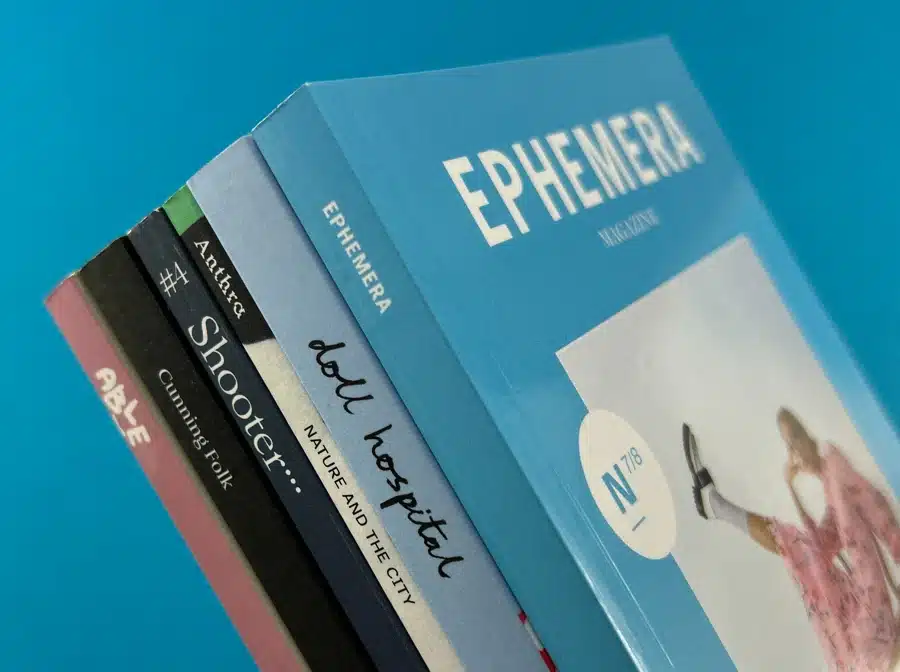
When to Use Perfect Bound Binding?
Perfect binding is a professional and durable binding method that's commonly used for:
- Books: Novels, textbooks, and reference books.
- Magazines: High-quality magazines with a significant number of pages.
- Catalogues: Product catalogues with a large page count.
- Annual Reports: Corporate annual reports and financial reports.
5. Wire-O Binding
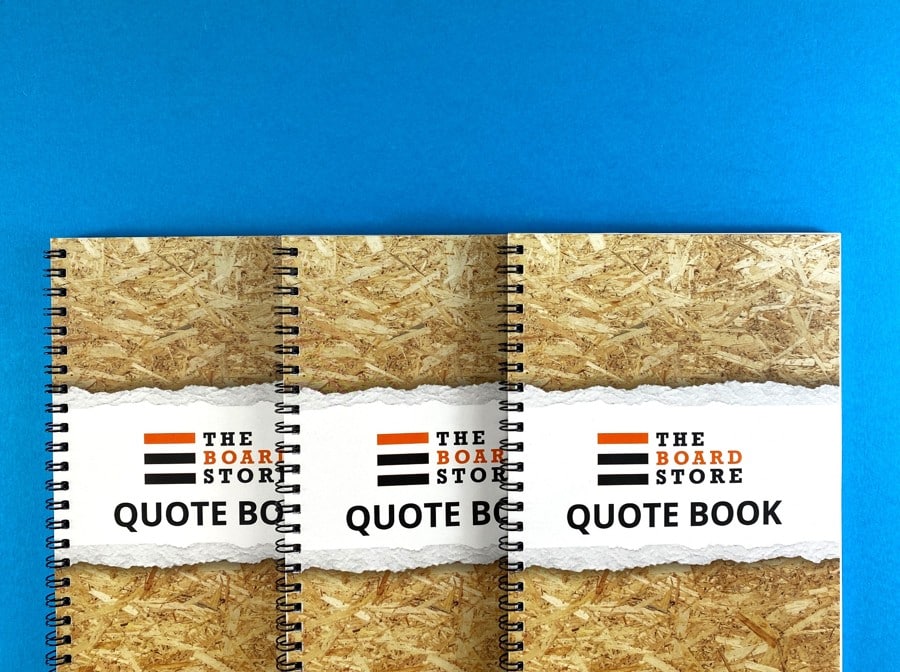
Another popular method is the Wire-O binding. Known diversely as wire binding, it's somewhat similar to the spiral and coil binding processes. A unique feature of the Wire-O binding is that it uses metal wire instead of plastic. The rectangular holes are punched through the pages of the booklet, and twin loops of wire on a comb spine are threaded through these holes. What you get is a classy, professional-looking booklet with a clean finish.
Like the spiral binding, the Wire-O bound booklet can also rotate a complete 360° without impairing the spine, rendering it an equally good option for notebooks, journals, and folders holding professional presentations. However, Wire-O, while providing a high-quality appeal, might turn out to be less durable since the metal coil is more malleable compared to the PVC plastic used in spiral binding.
When to Use this Binding Type?
This type of booklet binding is perfect for:
- Calendars: Provides a sturdy and easy-to-flip format.
- Notebooks and Journals: Offers a durable and flexible binding.
- Workbooks and Exercise Books: Allows for easy writing and drawing.
- Presentation Materials: Keeps pages secure and allows for easy flipping.
- Reference Materials: Provides easy access to specific pages.
6. Hardcover Binding
At the top end of the spectrum lies Hardcover binding, the creme-de-la-creme of binding methods. The process secures the pages by sewing them together in a group of pages called "signatures". As the name suggests, hardcover binding involves securing these signatures to a sturdy, durable cover. For added strength, the signatures are glued to end sheets, which are then glued to the spine.
Owing to these factors, hardcover binding results in a finished product that not only oozes elegance but also stands the test of time. It's the most robust binding option available, ensuring your booklet resists wear and tear effectively while maintaining the same look and feel for years to come. The process indeed does justice to the adage, "Don't judge a book by its cover", by giving your booklets the resilience and lasting charm they truly deserve.
The image below is an example of hardcover binding from our digital machine where the inside pages are glued together in one block.
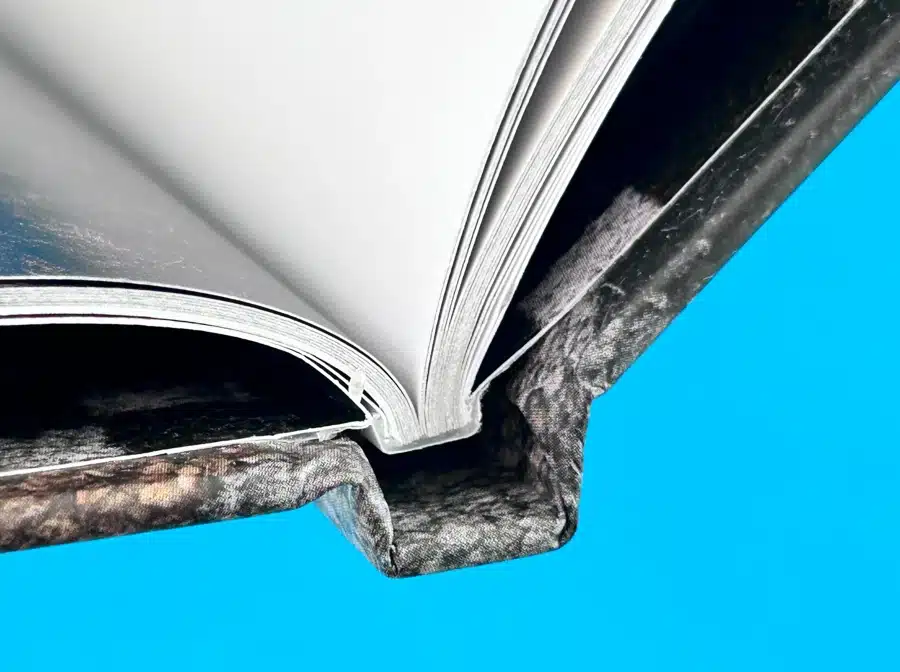
For longer print runs, we can print the books on our litho press as signatures of 8 or 16 pages. These are then folded into sections and sewn together.
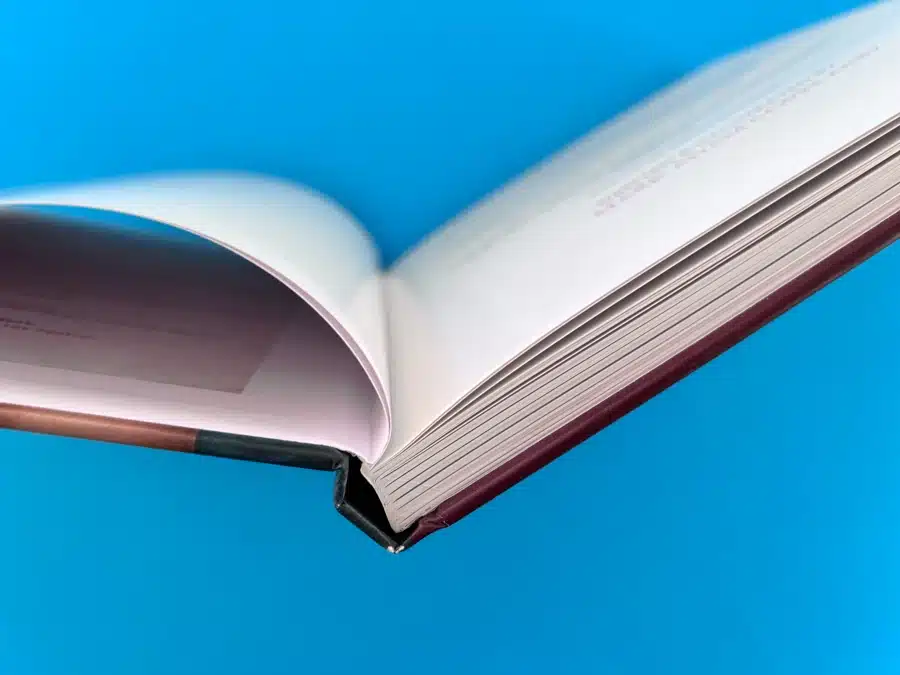
You can see the pages are literally sewn in making them super resilient. This is widely known as section sewing or section sewn and is the maximum possible professional binding option but the initial set-up costs can be very costly on small print runs.
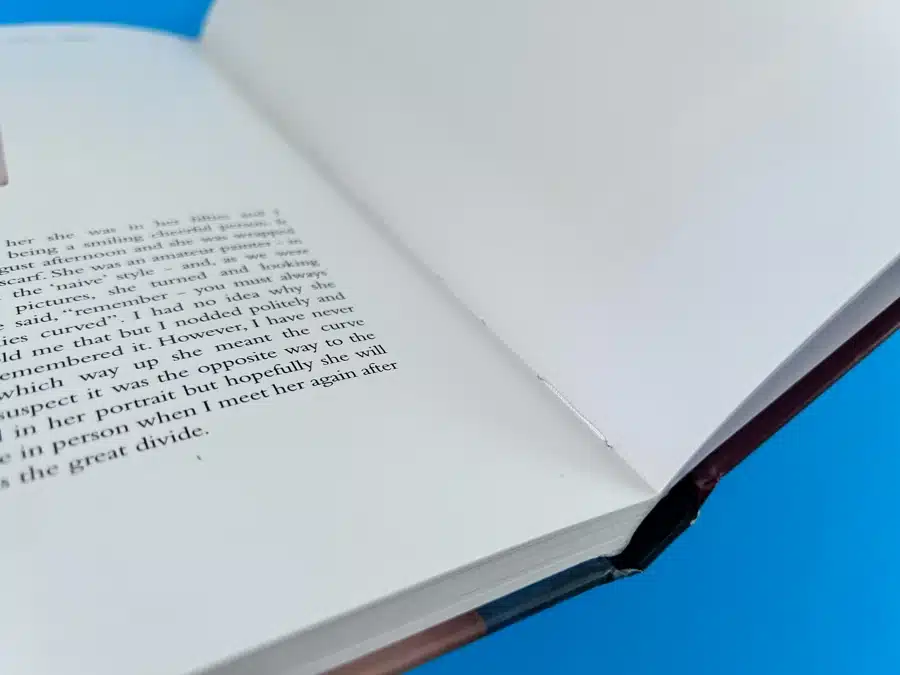
When to Use Hardcover Binding?
Hardcover binding should be your go-to option if durability and sophistication are your primary requirements. Hardcover books have a presence of their own – they demand attention, validate the worth of content within, and make a lasting impression. Here's when to use hardcover binding:
- Books: Novels, textbooks, and reference books, especially those intended for long-term use.
- High-end catalogues: Luxury product catalogues and corporate annual reports.
- Coffee table books: Books with high-quality images and text.
- Annual reports: Corporate annual reports, especially those with a significant number of pages.
- Photo albums: To protect precious memories and create a lasting keepsake.
Need help choosing the right binding method? Contact Ex Why Zed today.
Factors to Consider While Choosing a Binding Method
Just as the style and tone vary for each printed material, differing factors can impact the choice of booklet binding. Not every binding type suits all kinds of print. Factors such as the budget allocated towards the binding, aesthetics of the design, number of pages, purpose of the booklet, and size of the print run play vital roles. In the following section, each of these factors will be discussed in detail, highlighting how they impact your choice of binding method.
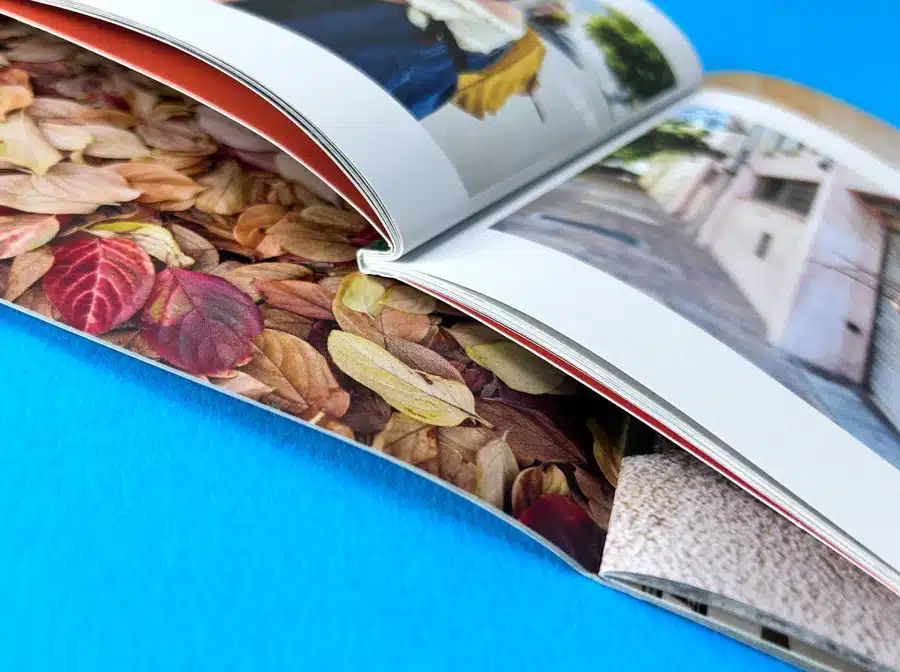
Budget
The first factor to consider when choosing a binding method is your budget. Binding methods like saddle stitching are incredibly cost-effective and best for smaller-budget projects like brochures or pamphlets. On the other hand, perfect bound and hardcover binding tend to be associated with higher costs due to their durability and professional appearance but offer great value for an increased budget. Other techniques like spiral or wire-O binding offer a balance between cost and longevity. It's essential to decide how much you're willing to spend on binding in line with your production volumes to strike the right quality-cost balance.
Design and Aesthetics
The design and aesthetic of your booklet can significantly influence your choice of binding:
- If you're aiming for a professional, sleek look, consider using perfect bound or Wire-O binding.
- If readability is a priority, then spiral binding could be a good fit as it allows the booklet to lay flat when opened.
- If you want a timeless, classy appeal that speaks volumes about the quality of your product or company, hardcover binding gives that superior touch.
- If you need a simple, light, and efficient binding for an event brochure or a course manual, the cost-effective saddle stitch or loop-stitch binding should work well.
Page Count
The number of pages in your booklet significantly impacts the choice of binding. For a lower page count booklet (up to around 64 pages), saddle stitch or loop stitch binding can be an ideal choice. For those with a higher page count, perfect bound, spiral, or wire-O binding are often the preferred options. Hardcover binding is suitable for particularly thick booklets intending to achieve an upscale appeal. Notably, some binding methods like saddle stitch require the page count to be in multiples of four due to its fold-and-staple process. It's critical to tailor your choice based on the volume of content you're offering.
Purpose of the Booklet
The intended use of the booklet forms a key determinant:
- Information Booklets: These often contain brief information and can feature saddle stitch or loop stitch binding for convenience and affordability.
- Manuals and Guides: Spiral or Wire-O binding, which allows the booklet to lay flat while reading, is ideal.
- Catalogues, Reports, and Corporate Documents: Use perfect bound or hardcover binding as they cater to a high page count and lend a professional look.
- Calendars: Spiral or Wire-O binding enables turning and displaying pages easily at a quick glance.
Print Run Size
The size of your print run also matters when it comes to selecting a binding method. Saddle stitching or loop stitch binding may be more economical if you need to quickly produce a large volume of booklets. Printing methods like perfect bound, spiral, or wire-O are better suited for smaller or medium-sized runs where the cost per unit can be better justified for the added durability and aesthetic appeal. Hardcover binding is often reserved for more select, high-value print runs.
Transform Your Documents with Ex Why Zed's Binding Solutions
Whether aiming for a cost-effective pamphlet, a high-class brochure, a functional manual, or a timeless artefact, Ex Why Zed's range of binding solutions caters to all your needs. With our diversified offering, we bring your content to life and present it in the most appealing way that resonates with its intended purpose.
Let's Create Something Extraordinary Together. Click Here to Request a Quote!
Final Thoughts
Deciding on the suitable booklet binding for your project can significantly enhance the overall look, durability, and functionality. It's not just about making information accessible; it's more about creating an impression – presenting the content in a form that appeals to and resonates with its intended readers.
Whether you choose saddle stitch for its simplicity and economy, perfect bound for its robustness and elegance, spiral for its flexibility, Wire-O for its seamless design, loop-stitch for its binder compatibility, or hardcover binding for its premium appeal, each method has its benefits and considerations.
The best part is there are options for every budget, style, and content volume. With knowledge about different binding types and an understanding of your specific needs aligned with your target audience, you can turn your booklet from a simple holder of information into a work of art that leaves a lasting impression.
Frequently Asked Questions
What binding methods are best for small page count booklets?
Saddle-stitch binding and loop-stitched binding are most often recommended for smaller page-count booklets due to their cost-effectiveness and simplicity. They're suitable for brochures, newsletters, and other light documents that are at most 64 pages.
Are there environmentally friendly options for booklet binding?
Indeed, many binding methods can be environmentally friendly, especially when combined with sustainably sourced materials for the covers and pages. All binding types, from saddle stitch to perfect bound, could be considered green if they utilise recycled or certified sustainable materials.
Which binding type is most durable for heavy usage?
Hardcover binding stands out when it comes to durability and resilience. Secured by sewing and glueing pages to a hard cover, it's built to withstand heavy use over extended periods. Perfect bound and spiral binding are also famous for their relative robustness.
Can I print on the spine with certain binding types?
Perfect binding allows printing on the spine due to its robust structure. It's a handy feature for booklets meant to be stored on a bookshelf, like catalogues or manuals. Hardcover binding also offers this option, adding an extra design element that delivers a professional look.

